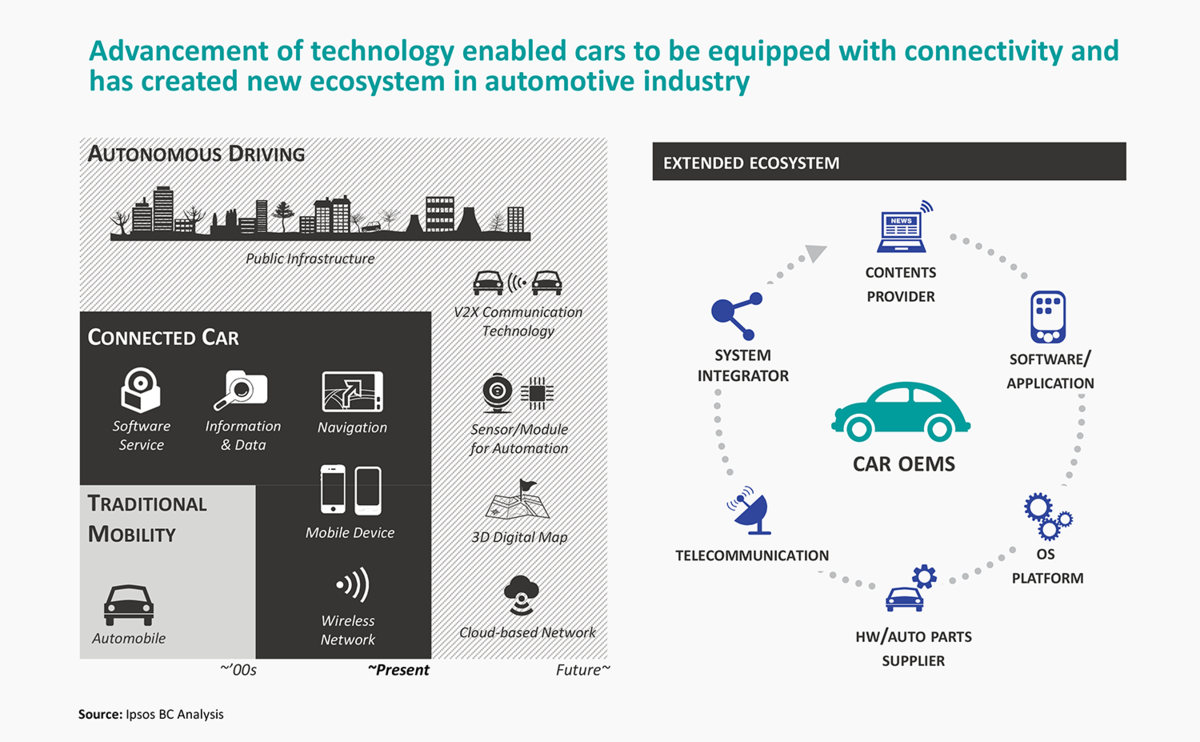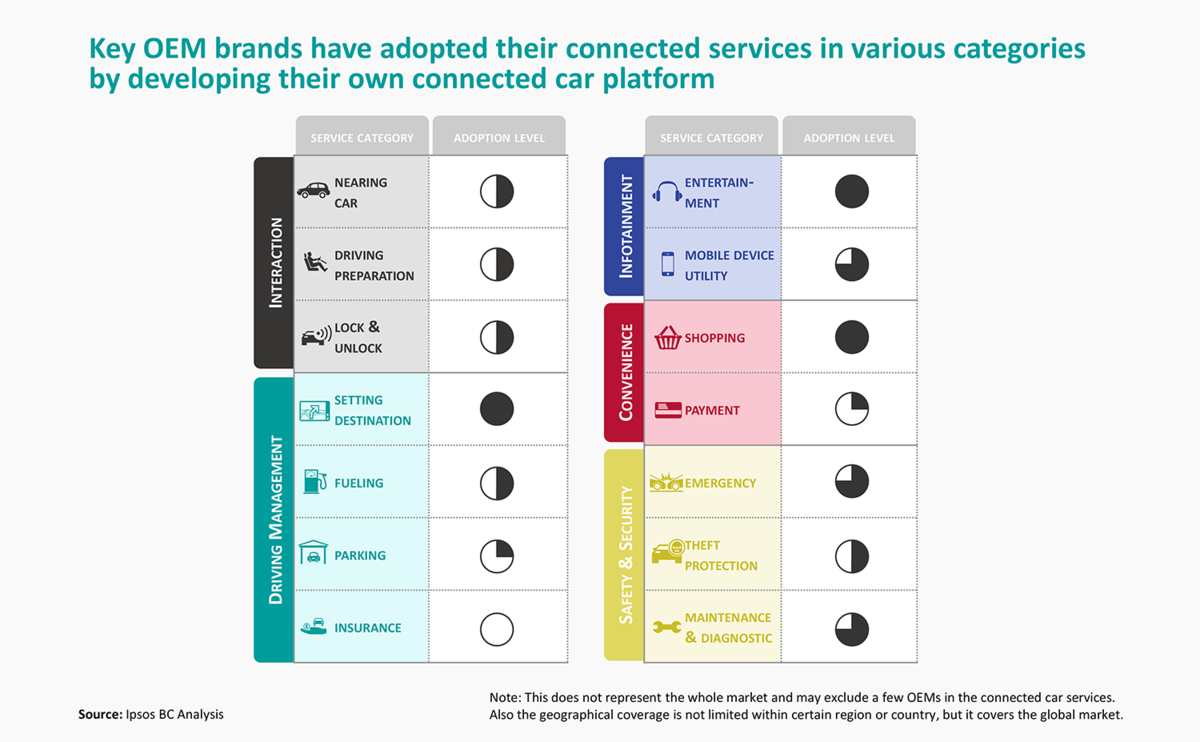
Connected Car
Connected Car
Connected cars have created a new ecosystem within the automotive industry, one which is forging a host of innovative partnerships with technology companies, original equipment manufacturers (OEMs) and other companies that operate outside of the scope of traditional motoring. These collaborations are becoming increasingly focused on creating new products and services to meet the diverse lifestyle needs of contemporary consumers. Industry analysts suggest that these developments are expected to help the number of connected cars in the global market increase from 15million today to 69million in 2020.
This new ecosystem has transformed traditional mobility by hardwiring telecommunications, operating systems, real-time analytics and content platforms, among other elements, into the driving experience. The ecosystem is itself fast evolving to meet the changing and increasingly complex needs of the contemporary consumer. When connected cars first entered the market — in around 2010 — most products and services where focused on traditional car related issues, such as automatic maintenance notifications and parts ordering for luxury vehicles, GPS and advanced parking / proximity awareness systems. Providing greater integration with the new technologies of the day, such as smartphones, saw significant improvements in hands-free systems and integrated entertainment options.
Most products and services can be grouped into five core functional clusters, namely: These horizons are being expanded further as the way in which people use and rely on technology changes the way in which they interact with the world, a dynamic which will become even more sophisticated as the Internet of Things becomes reality.
These horizons are being expanded further as the way in which people use and rely on technology changes the way in which they interact with the world, a dynamic which will become even more sophisticated as the Internet of Things becomes reality.
Just as connected devices have made it possible for consumers to manage virtually any aspect of their life on-the-fly, carmakers, and their non-traditional partners, are now realising exploring how connected cars can fulfil and facilitate the same needs and demands. The successful connected car will exist within the Internet of Things and be both a vehicle and an enabler of broader lifestyle activities.
Audi Connect Easy Delivery is a prime example of how companies are collaborating in this new field. The carmaker is collaborating with DHL, an international courier service, and Amazon, to bring a new level of convenience to online shopping and delivery service. Audi owners can now request Amazon to deliver orders directly to the boot of their car. The technology platform incorporates online shopping, location services and security enabling Amazon to locate the car in a car park, enter a security code for the luggage compartment, pop the boot and leave the parcel inside.
Adoption levels vary widely according to the function provided in connected cars, and it comes as no surprise that the most common functions in use are those that are directly focused on the driving or in-car experience, such as GPS, smartphone mirroring, maintenance diagnostics or emergency services. These more pragmatic and obvious services were developed first, however, mobile payment (especially for drive-throughs), online shopping and other convergence services are underutilized and therefor present significant opportunities as a result.



